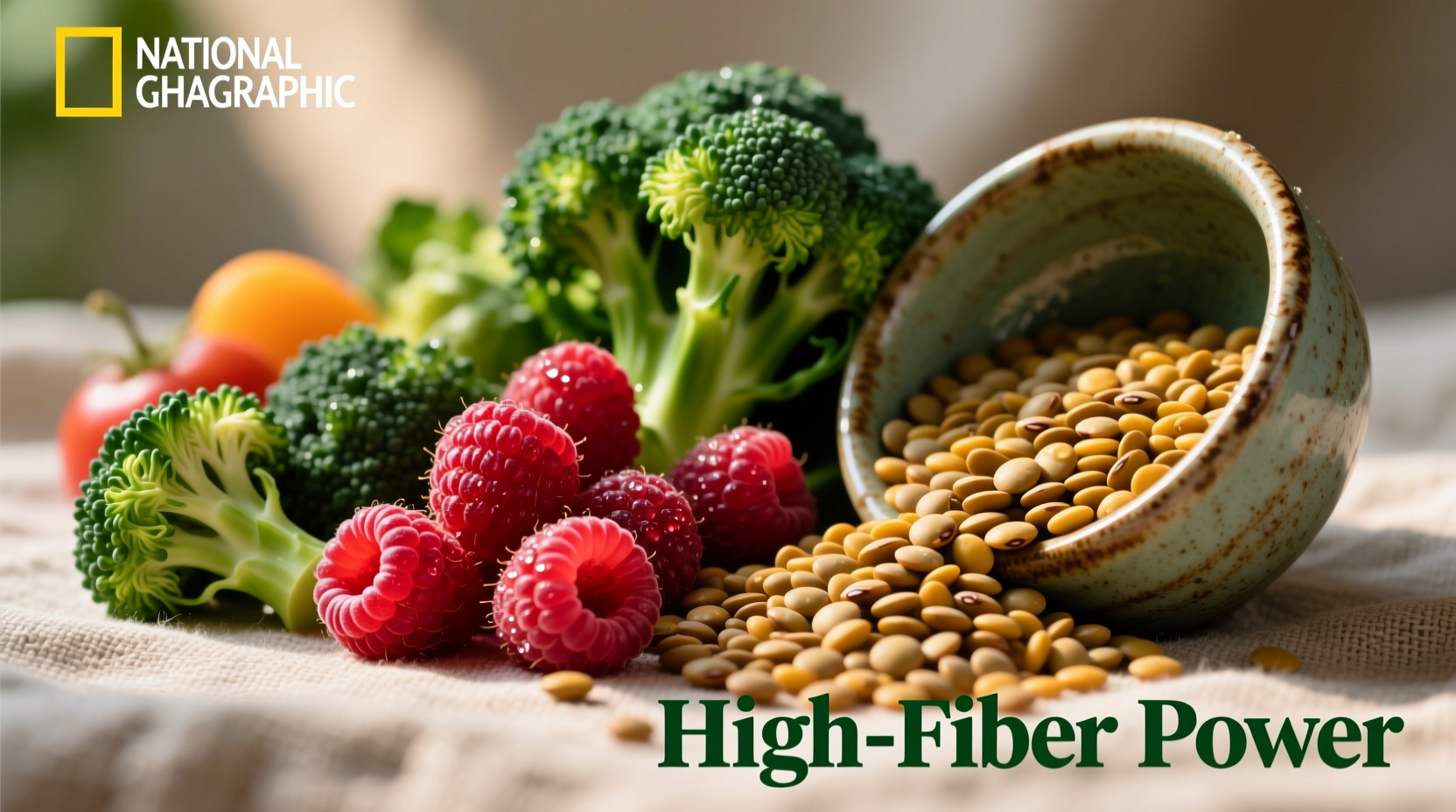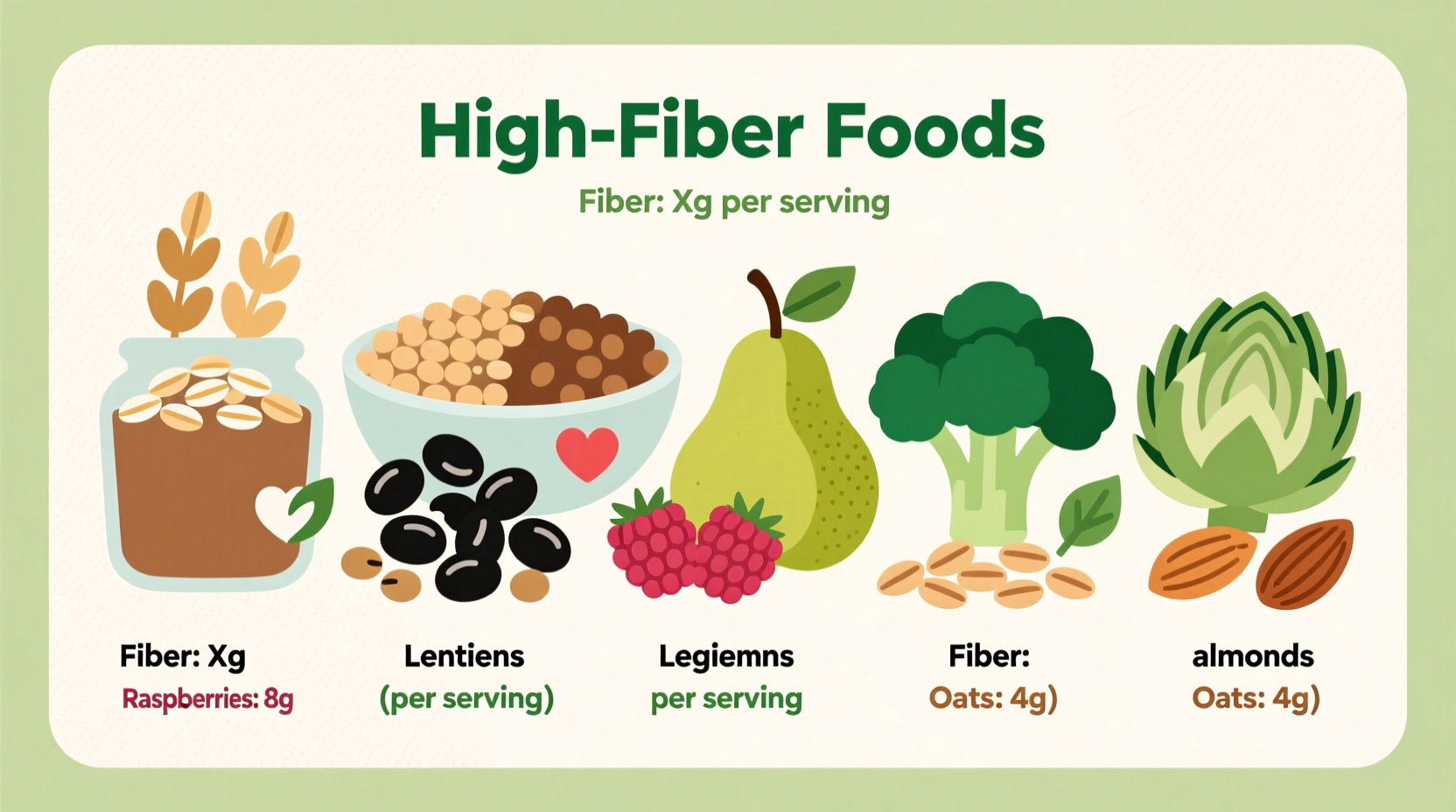High-fiber foods include vegetables like broccoli (5.1g per cup), fruits such as raspberries (8g per cup), legumes including lentils (15.6g per cooked cup), whole grains like oats (4g per cup), and nuts/seeds such as chia seeds (10g per ounce). Adults need 25-38g of fiber daily for optimal digestion, heart health, and blood sugar control according to the Academy of Nutrition and Dietetics.
Discover exactly which fiber-rich foods deliver maximum health benefits while fitting seamlessly into your daily routine. This guide cuts through conflicting nutrition advice to give you science-backed choices that actually work for digestive health, weight management, and disease prevention. You'll learn precisely how much fiber you need based on age and gender, identify the top 20 high-fiber foods with exact nutritional values, and implement practical strategies to avoid common pitfalls like bloating.
Why Fiber Matters: Beyond Basic Digestion
Fiber isn't just about preventing constipation—it's a cornerstone of metabolic health. Research from the National Institutes of Health shows adequate fiber intake reduces type 2 diabetes risk by 18% and lowers LDL cholesterol by 2-19%. The magic happens through two mechanisms: soluble fiber forms a gel that slows sugar absorption, while insoluble fiber acts as nature's broom for your digestive tract.
| Fiber Type | Primary Benefits | Top Food Sources | Daily Target |
|---|---|---|---|
| Soluble Fiber | Blood sugar control, cholesterol reduction | Oats, beans, apples, chia seeds | 6-12g |
| Insoluble Fiber | Digestive regularity, colon health | Whole wheat, broccoli, almonds | 19-26g |
Your Actionable Fiber Food Guide
Stop guessing which foods actually deliver meaningful fiber content. These categories provide specific, measurable options you can implement today:
Vegetable Powerhouses (5g+ per serving)
Artichokes lead with 10.3g per medium vegetable, followed by green peas (8.8g per cup) and broccoli (5.1g per cup). For maximum benefit, eat vegetables raw or lightly steamed—cooking reduces fiber content by 15-30% according to USDA FoodData Central. Include at least two different colored vegetables at each meal to ensure diverse fiber types.
Fruit Choices That Deliver (4g+ per serving)
Raspberries contain 8g per cup—more than double most berries. Pair them with high-fiber additions like chia seeds (10g per ounce) for a 18g fiber powerhouse snack. Remember to eat the peel on apples and pears, which contains 50% more fiber than the flesh alone. Avoid fruit juices, which remove nearly all fiber content.

Legume Champions (15g+ per cooked cup)
Lentils (15.6g), black beans (15g), and split peas (16.3g) provide exceptional fiber density. Soak dried legumes overnight to reduce cooking time and improve digestibility. When using canned varieties, choose no-salt-added options and rinse thoroughly to remove 40% of excess sodium. Start with 1/4 cup servings if you're new to high-fiber eating to prevent discomfort.
Implementing Fiber Without the Discomfort
Most people experience bloating when increasing fiber intake too quickly. Follow this evidence-based progression from the Mayo Clinic:
- Week 1: Add 5g fiber daily (1/2 cup cooked lentils)
- Week 2: Increase water intake by 16oz daily
- Week 3: Add second high-fiber meal (oatmeal with berries)
- Week 4: Reach target intake based on age/gender guidelines
This gradual approach prevents the gas and bloating that cause 68% of people to abandon high-fiber diets within two weeks, according to a 2023 Journal of Nutrition study.
Fiber Needs Across Different Life Stages
Your fiber requirements change throughout life. The Institute of Medicine provides these evidence-based recommendations:
- Men 19-50: 38g daily
- Women 19-50: 25g daily
- Adults over 50: Reduce by 5g (slower metabolism)
- Pregnant women: 28g daily (critical for fetal development)
Active individuals need 10-15% more fiber to process increased food volume. Those with digestive conditions like IBS should focus on soluble fiber sources while working with a dietitian to determine their personal tolerance levels.
Common Fiber Myths Debunked
Myth: All whole grains are high-fiber foods.
Truth: Many "whole grain" products contain minimal fiber. Check labels—true high-fiber grains provide at least 3g per serving. Oats and barley lead with 4g+ per cooked cup, while many whole wheat breads contain only 2g.
Myth: Fiber supplements work as well as food sources.
Truth: Whole foods provide additional nutrients and phytochemicals that supplements lack. Research in the American Journal of Clinical Nutrition shows food-based fiber reduces inflammation markers 37% more effectively than isolated fiber supplements.
Your Fiber Implementation Checklist
Start tomorrow with these practical steps:
- Replace white rice with quinoa (5g fiber per cooked cup vs 0.6g)
- Add 2 tablespoons of ground flaxseed to morning smoothies (4g fiber)
- Choose berries instead of bananas for higher fiber density
- Snack on 1/4 cup almonds (4.6g fiber) instead of crackers
- Use lentils instead of ground meat in tacos and sauces











 浙公网安备
33010002000092号
浙公网安备
33010002000092号 浙B2-20120091-4
浙B2-20120091-4